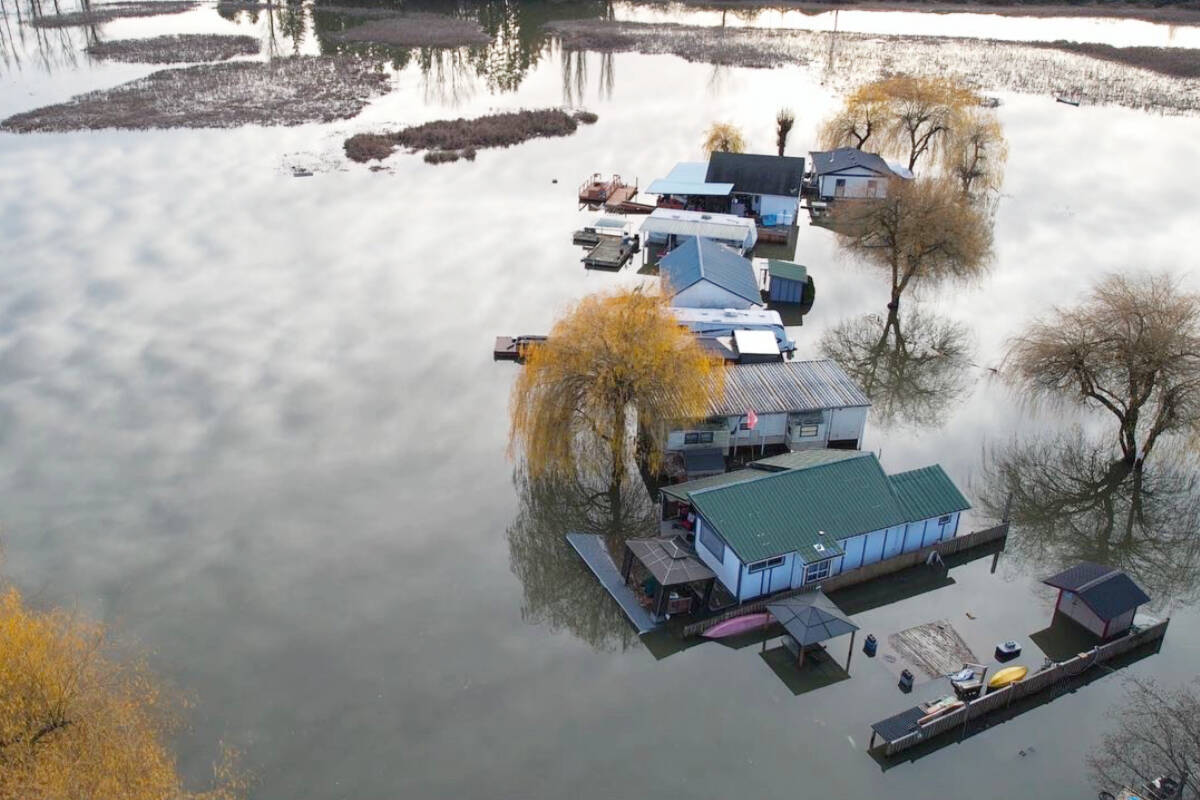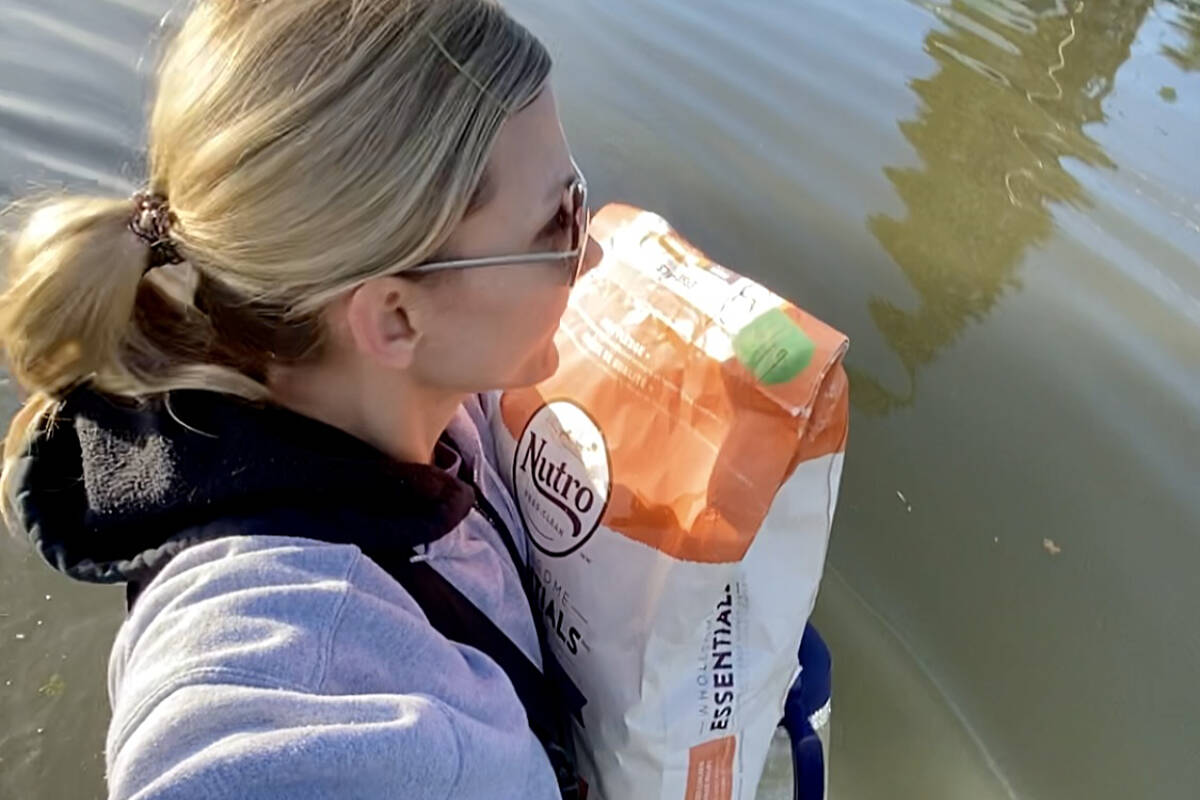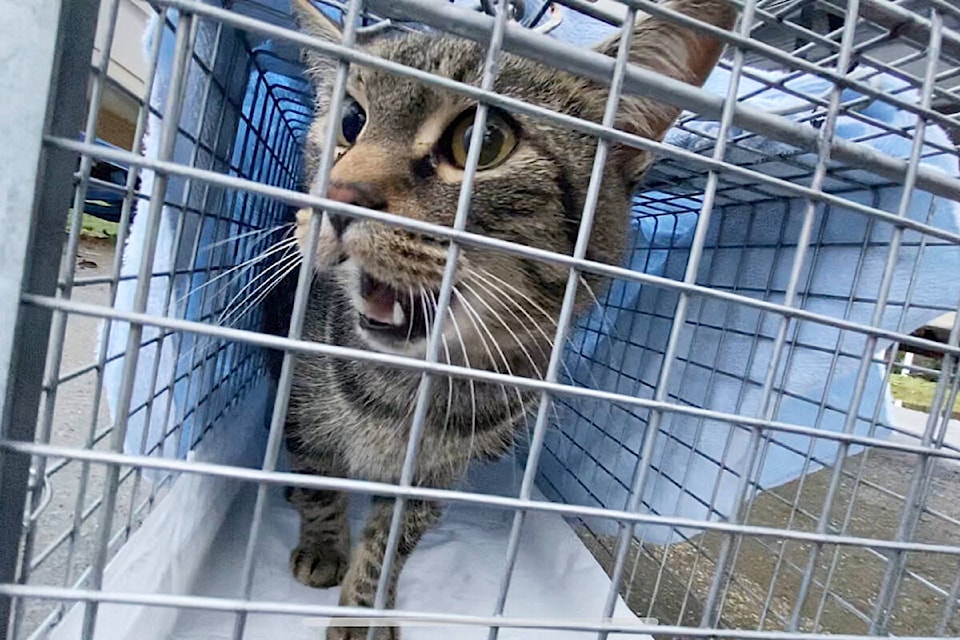When humans fled the rising floodwaters in the Fraser Valley last month, they were forced to leave behind livestock and pets.
A Langley cat rescue and fostering group was one of many that sprang into action to find, feed, and where possible rescue stranded cats.
Shelly Roche of TinyKittens watched the flooding that began on Nov. 14 and 15 with shock.
“I think like a lot of people, I was watching what was happening with growing horror,” she said.
Her first response was to post online to let people fleeing the floodwaters know they could bring cats to TinyKittens for temporary shelter.
TinyKittens is primarily oriented towards feral cats. Roche and her volunteer team works on trap-neuter-release programs that aim to reduce the number of feral cats around Langley and neighbouring communities. With kittens and some adoptable adult cats, they find them new permanent homes.
Since they have expertise with fearful, anxious, and feral cats, Roche knew they were well positioned to deal with some of the cats that would be coming out of the flooded zones, and she also knew that some people fleeing wouldn’t be able to keep their pets with them.
READ ALSO: TinyKittens sees success in saving feral cat colonies
TinyKittens is hosting two “random flood cats” that are boarding with the society, Roche said, as their owners can’t look after them after being displaced.
One of those is Campbell, who was taken in from another rescue because he was difficult to handle, and assumed to be feral. Now that he’s calmed down, it turns out he was just traumatized and terrified, and TinyKittens is looking for a permanent home for him.
By several days into the flooding, as water levels in the newly re-created Sumas Lake remained high, Roche was worrying about the cats who had been left behind.
She knew there would be cats stuck in barns and houses, who would be sick and suffering, and she began getting calls from people who needed help getting their cats out of the flood zone.
Roche and several volunteers helped one family recover three cats – Jazzy, Dodger, and Indy – from a hobby farm in Abbotsford. Dodger and Indy survived and are doing well after their ordeal, Roche said, but despite veterinary treatment, Jazzy did not survive.
Then Roche and a whole coalition of cat rescue groups headed for the Hatzic area. Several areas, including a trailer park, were hit hard by flooding, and there was a known feral cat colony in the area.
On their early trips, they took food for the cats. The waters began to recede, but after the second flood, they returned and rescued nine cats.
Roche said there are plans for continued trapping of displaced cats in and around Hatzic.
“That will be an ongoing thing that continues for a while,” she said.
Aiding families who have lost their homes and properties, and were separated from their animals, was one of the hardest things she’s ever done, Roche said.
She felt helpless in the face of the floods, but being able to rescue some cats helped, said Roche.
“It helped a little bit with that feeling of helplessness,” she said.
Have a story tip? Email: matthew.claxton@langleyadvancetimes.com
Like us on Facebook and follow us on Twitter.


